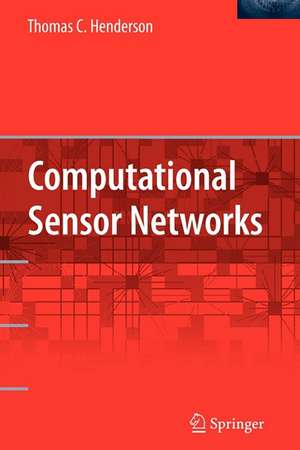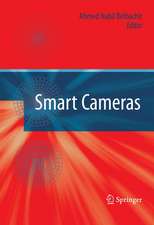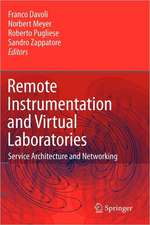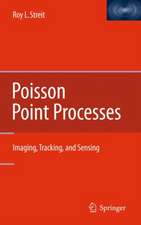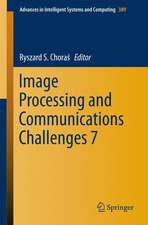Computational Sensor Networks
Autor Thomas Hendersonen Limba Engleză Paperback – 29 oct 2010
| Toate formatele și edițiile | Preț | Express |
|---|---|---|
| Paperback (1) | 637.59 lei 43-57 zile | |
| Springer Us – 29 oct 2010 | 637.59 lei 43-57 zile | |
| Hardback (1) | 644.18 lei 43-57 zile | |
| Springer Us – apr 2009 | 644.18 lei 43-57 zile |
Preț: 637.59 lei
Preț vechi: 750.11 lei
-15% Nou
Puncte Express: 956
Preț estimativ în valută:
122.00€ • 127.70$ • 101.54£
122.00€ • 127.70$ • 101.54£
Carte tipărită la comandă
Livrare economică 31 martie-14 aprilie
Preluare comenzi: 021 569.72.76
Specificații
ISBN-13: 9781441935014
ISBN-10: 1441935010
Pagini: 240
Ilustrații: XII, 228 p.
Dimensiuni: 155 x 235 x 13 mm
Greutate: 0.34 kg
Ediția:2009
Editura: Springer Us
Colecția Springer
Locul publicării:New York, NY, United States
ISBN-10: 1441935010
Pagini: 240
Ilustrații: XII, 228 p.
Dimensiuni: 155 x 235 x 13 mm
Greutate: 0.34 kg
Ediția:2009
Editura: Springer Us
Colecția Springer
Locul publicării:New York, NY, United States
Public țintă
ResearchCuprins
CSN: Overview of Approach.- Leadership Algorithms.- Coordinate Frames and Gradient Calculation.- Pattern Formation in S-Nets.- Logical Sensors and Computational Mapping.- Mobile Robot Performance Analysis.- CSN: The Heat Equation.- Bayesian Estimation of Distributed Phenomena.
Textul de pe ultima copertă
This text proposes a model-based approach to the design and implementation of Computational Sensor Networks (CSNs). This high-level paradigm for the development and application of sensor device networks provides a strong scientific computing foundation, as well as the basis for robust software engineering practices. Building upon a model-based approach the text discusses computational modeling of sensor networks and covers real-time computational mapping that allows for modification of system parameters according to real-time performance measures.
Drawing upon years of theoretical development and practical experience, and using numerous examples and illustrative applications, Thomas Henderson covers the sensor network as a computational science tool and describes:
A computational framework for sensor networks;
Emergent algorithms for cluster formation, coordinate frames, gradients, reaction-diffusion pattern formation, and level set computation in a sensor network;
How CSNs can be used to develop models to probe the structure of the sensor system itself by solving inverse problems based on strong models (e.g., PDEs) of the physical phenomena;
How CSNs can be used to model sensor network systems, including surveillance, environment modeling, structure monitoring, and biomedical monitoring;
Computational Sensor Networks is a must have book for sensor network application engineers, computer engineers, computer scientists and those involved in the development, design and building of sensor networks in an industrial, research and an academic environment.
Drawing upon years of theoretical development and practical experience, and using numerous examples and illustrative applications, Thomas Henderson covers the sensor network as a computational science tool and describes:
A computational framework for sensor networks;
Emergent algorithms for cluster formation, coordinate frames, gradients, reaction-diffusion pattern formation, and level set computation in a sensor network;
How CSNs can be used to develop models to probe the structure of the sensor system itself by solving inverse problems based on strong models (e.g., PDEs) of the physical phenomena;
How CSNs can be used to model sensor network systems, including surveillance, environment modeling, structure monitoring, and biomedical monitoring;
Computational Sensor Networks is a must have book for sensor network application engineers, computer engineers, computer scientists and those involved in the development, design and building of sensor networks in an industrial, research and an academic environment.
Caracteristici
Describes a computational framework for sensor networks Discusses how CSNs can be used to develop models to determine the unknown aspects of particular measurement systems given a state of the physical phenomena Discusses how computational sensor networks can be used to model sensor network systems of any sort, including surveillance, environment modeling, structure monitoring, and biomedical monitoring, as well as in the large to dynamic data driven large-scale simulation scenarios
